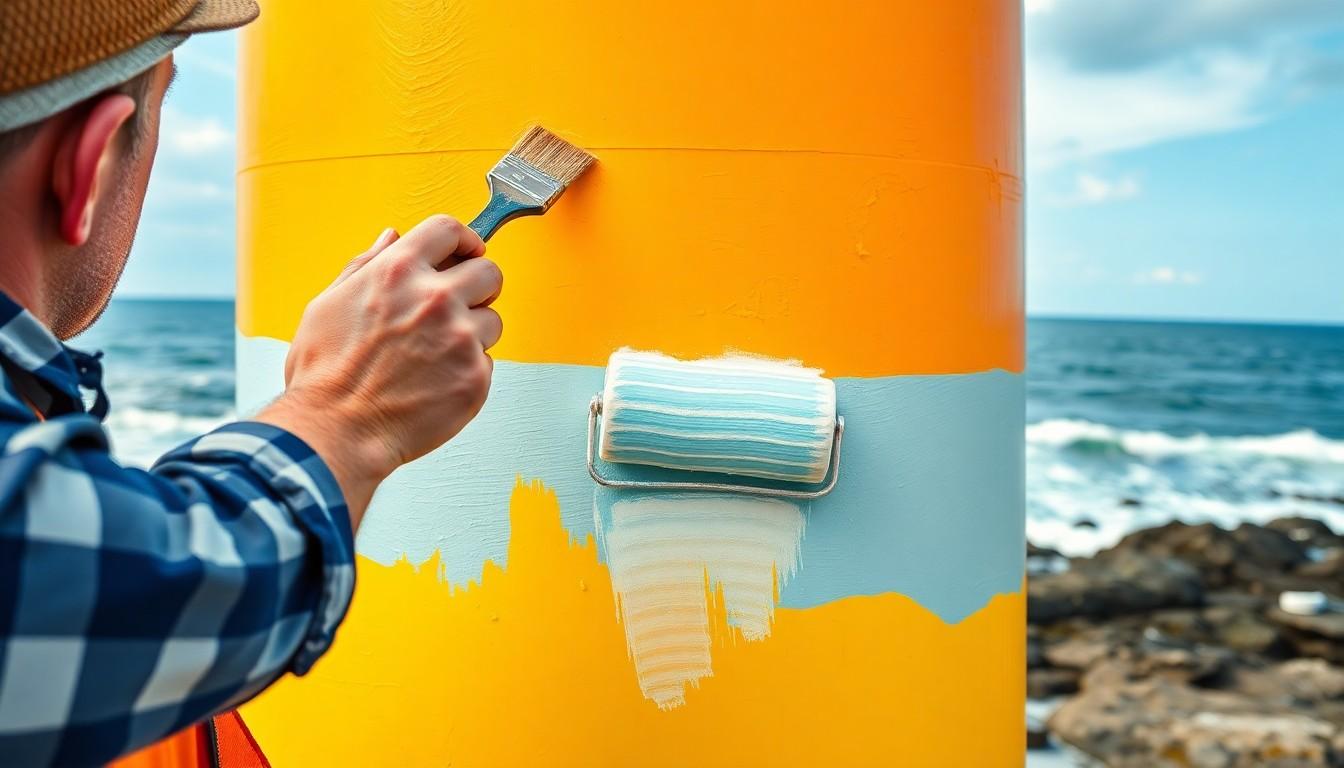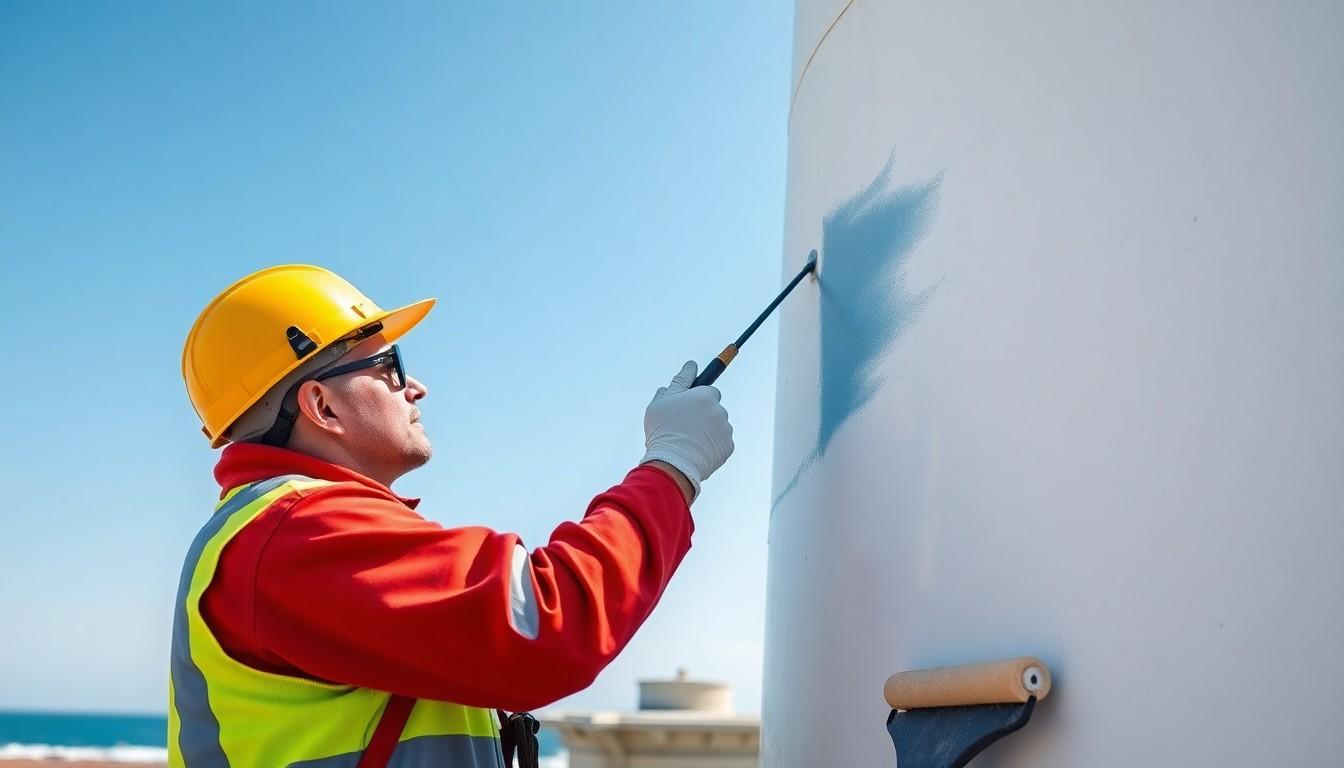Imagine a world where lighthouses stand tall, not just as beacons of hope but as vibrant works of art. Lighthouse painting isn’t just about keeping those iconic structures in tip-top shape; it’s a chance to unleash creativity while preserving maritime history. With the right colors and techniques, a simple coat of paint can transform a weathered lighthouse into a stunning visual masterpiece that even seagulls would stop to admire.
Light House Painting
Lighthouse painting serves two primary objectives: preservation and artistic innovation. These iconic structures, often positioned in scenic coastal areas, require regular maintenance to withstand harsh environmental conditions. Professional painters usually employ durable, weather-resistant paints to ensure longevity.
Color selection plays a vital role in lighthouse painting. Many lighthouses feature distinctive color schemes that enhance their visibility while also reflecting local heritage. For instance, red and white stripes are common in certain regions, signaling safety to mariners. Visitors often find joy in the unique artistry displayed, as each lighthouse tells its own story through color and design.
Preparation is equally important in the painting process. Painters frequently assess the structure for any damage before starting. Cleaning surfaces thoroughly and repairing cracks ensures a smooth application of paint. Techniques such as spray painting offer efficiency while achieving a uniform finish on large areas.
Artistic components often transform a simple lighthouse into a visual masterpiece. Murals or patterns can be added to reflect local culture and history. Various techniques, including stenciling and freehand design, show how creativity enhances functionality.
Regular maintenance is essential for a lighthouse’s longevity. Inspecting paint condition periodically prevents deterioration and maintains the structure’s aesthetic appeal. Preservation methods often involve touch-up painting to combat fading or peeling.
Understanding the significance of lighthouse painting fosters appreciation for these enduring symbols of maritime safety. Engaging with this artistic process enriches the cultural landscape and enhances communities through beautifully maintained landmarks.
Tools And Materials Needed


Successful lighthouse painting requires specific tools and materials. These items ensure the project achieves both durability and aesthetic appeal.
Brushes And Rollers
Brushes serve various purposes in lighthouse painting. Detail brushes allow precise work around edges and intricate designs. For large surfaces, rollers expedite coverage, especially when using high-quality paint. Professionals often use foam rollers for a smooth finish, while angled brushes help reach tricky spots. Selecting tools that align with the project’s needs ensures an efficient painting process.
Paint Types
Choosing the right paint plays a critical role in lighthouse preservation. Marine-grade paint resists harsh weather and provides longevity. Both acrylic and epoxy paints are popular due to their durability and flexibility. Acrylic paint is easy to apply and offers vibrant colors, while epoxy paint cures to form a tough, long-lasting surface. Using the appropriate paint not only enhances visibility but also withstands environmental challenges.
Techniques For Light House Painting
Effective lighthouse painting involves specific techniques that ensure durability and visual appeal. The process begins with thorough preparation, setting the foundation for successful application.
Prep Work And Priming
Preparation requires careful damage assessment and necessary repairs. Clean surfaces using pressure washing, which removes dirt, mildew, and peeling paint. Afterward, allow adequate drying time to ensure proper adhesion. Priming the surface is essential, as it creates a barrier against moisture and enhances paint adherence. Use a high-quality primer suitable for marine environments. It’s beneficial to select a primer that matches the paint color to ensure an even finish.
Application Methods
Various application methods yield different results in lighthouse painting. Brush application provides precision, suitable for intricate details and edges. Rollers facilitate quick coverage on larger surfaces, promoting efficiency. Spray painting delivers a smooth finish, especially on high structures. Choose marine-grade paint specifically designed for harsh coastal conditions to prolong longevity. Consider local weather conditions when scheduling application, as temperature and humidity significantly affect drying times.
Common Challenges In Light House Painting
Lighthouse painting involves navigating several challenges that can impact the quality and longevity of the work. Two key issues include weather conditions and surface preparation.
Weather Conditions
Unpredictable coastal weather poses a significant challenge for lighthouse painting projects. Rain, wind, and humidity can delay or compromise painting efforts. High humidity levels can affect paint adhesion, leading to peeling or bubbling. Extremely windy conditions present safety risks and can cause uneven application of paint. Painters must monitor weather forecasts closely, choosing optimal days for the job. Time of year also influences weather patterns, so planning around seasonal changes ensures better results.
Surface Preparation
Preparation of the lighthouse’s surface is essential for successful painting. Inspecting the structure for damage, rust, or existing paint problems is necessary before starting. Cleaning surfaces thoroughly helps remove dirt, salt, and debris, making paint adhere better. Using pressure washers can effectively strip old paint and grime. Conducting repairs on compromised areas prevents further deterioration. Applying a high-quality primer supports the longevity of the paint job and improves coverage, making preparation as crucial as the painting itself.
Lighthouse painting serves as a vital intersection of preservation and artistry. By maintaining these iconic structures, communities not only protect their historical significance but also celebrate local culture through creative expression. The right techniques and materials ensure that lighthouses withstand the elements while remaining visually striking.
Regular maintenance and attention to detail can transform these maritime beacons into captivating landmarks. As they continue to guide sailors safely to shore, the artistry involved in their painting adds a unique charm that resonates with both locals and visitors alike. Embracing the challenges of lighthouse painting ultimately enriches the coastal landscape and fosters a deeper appreciation for these enduring symbols of safety and heritage.

